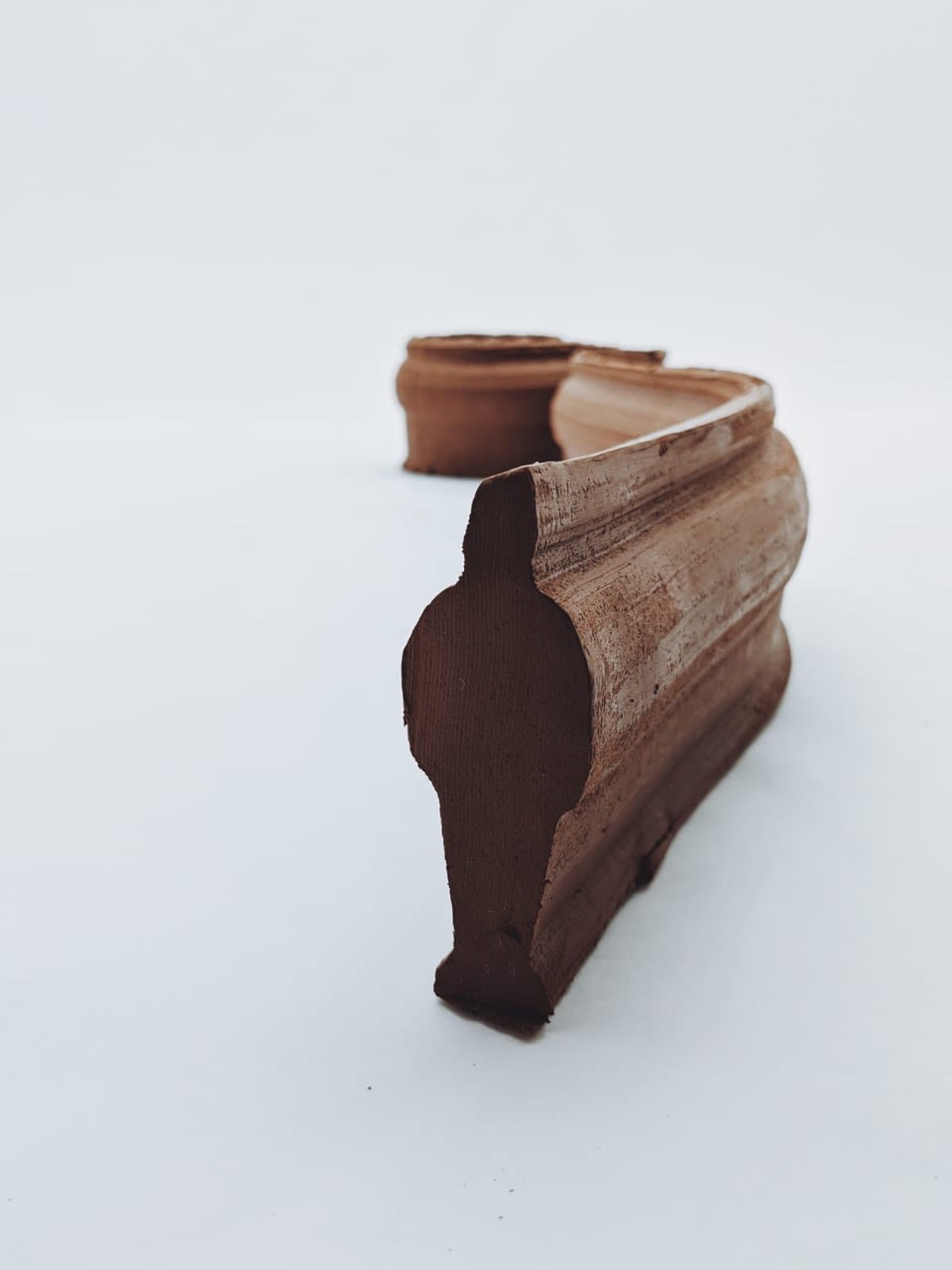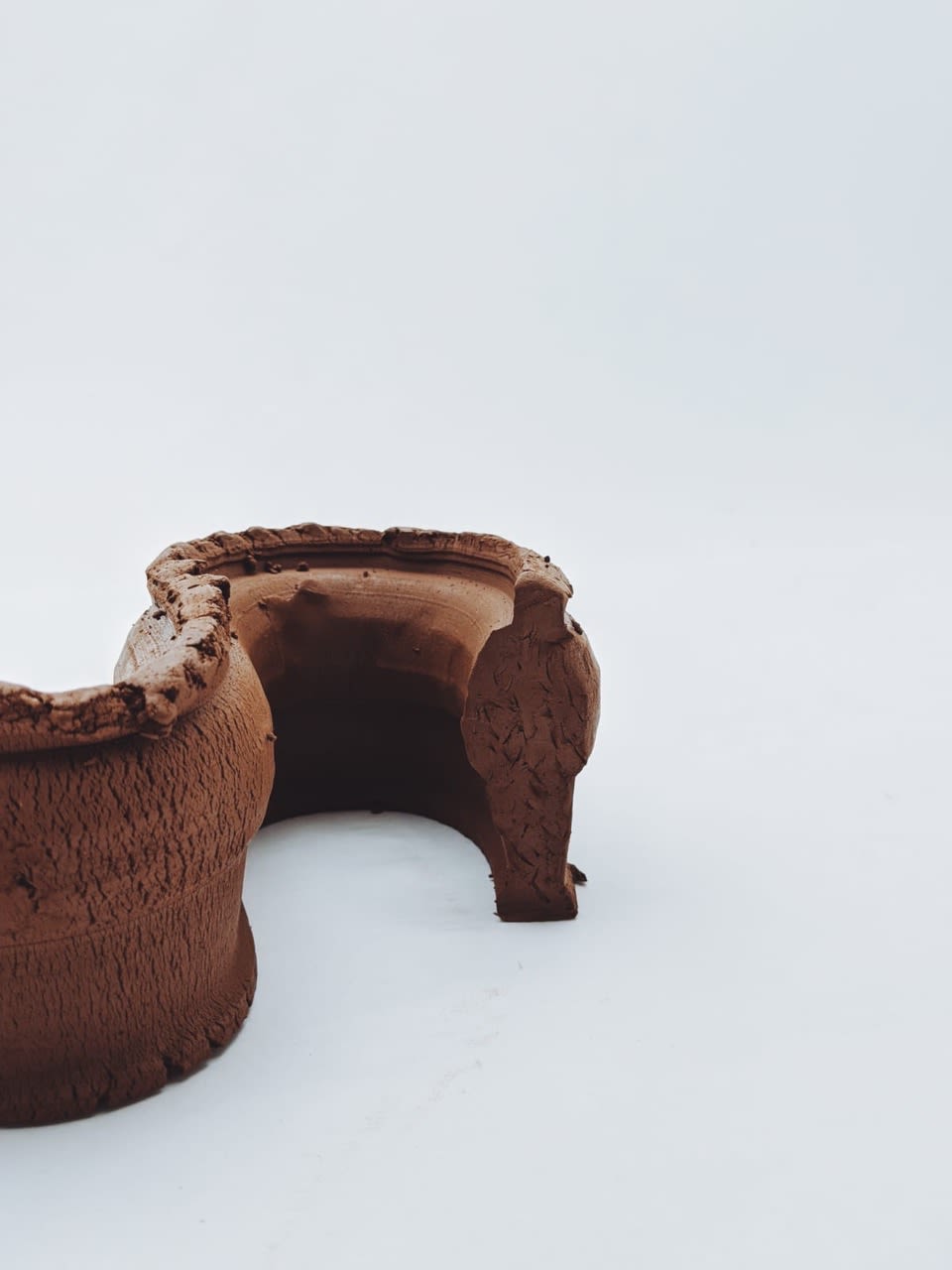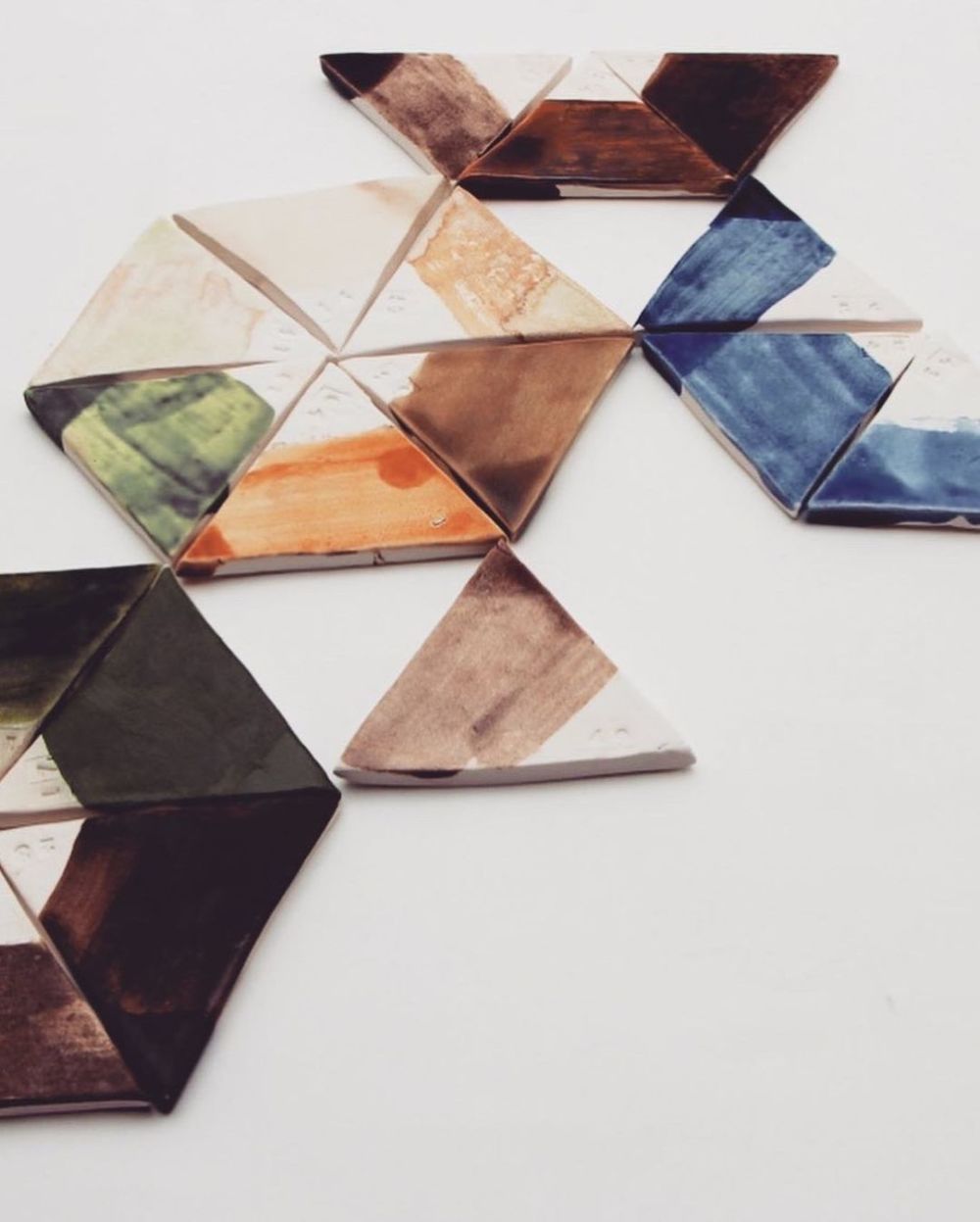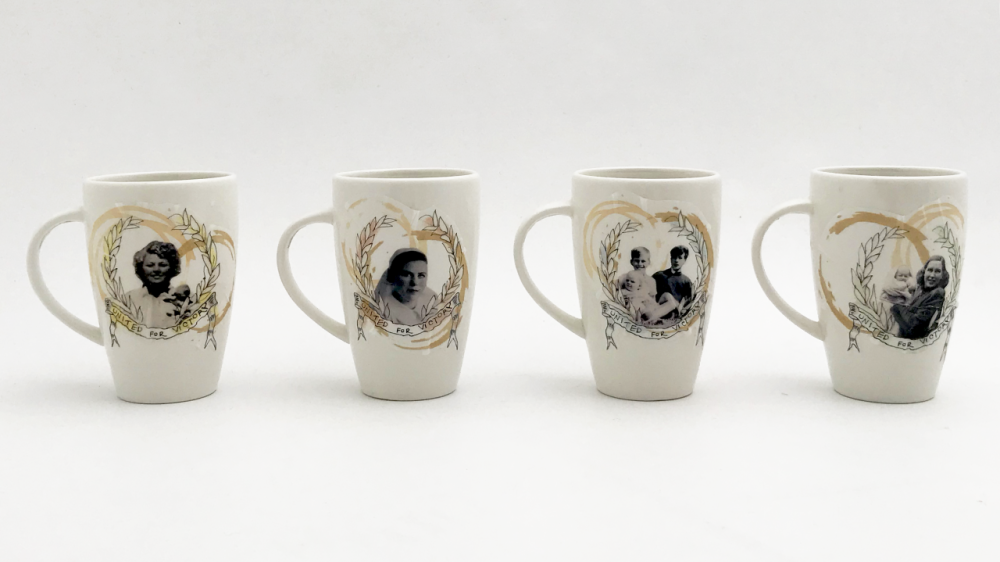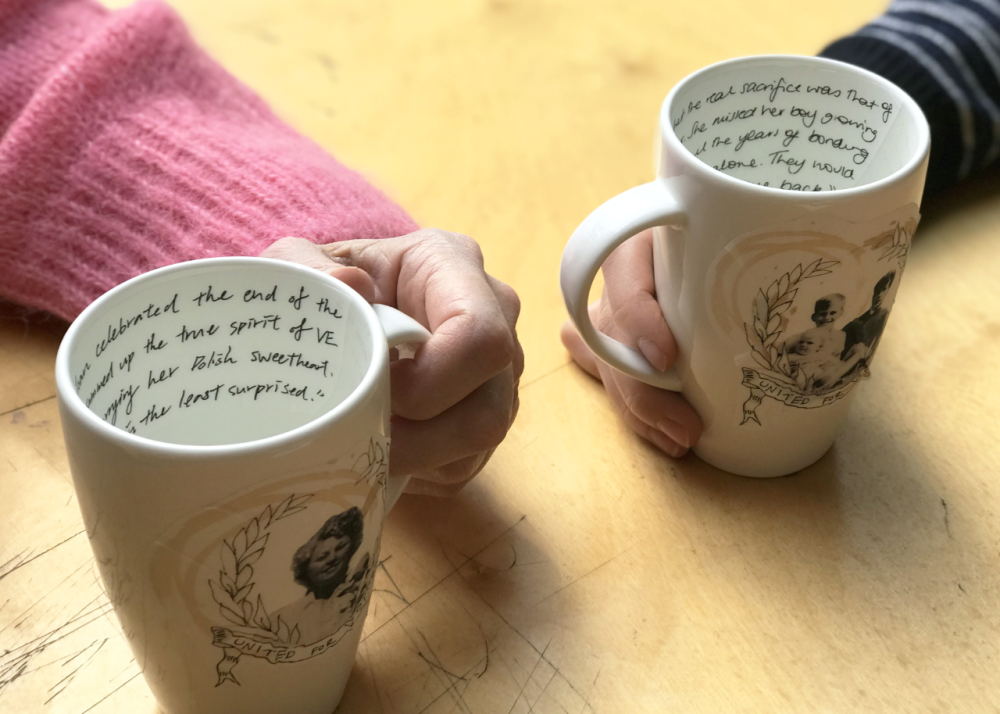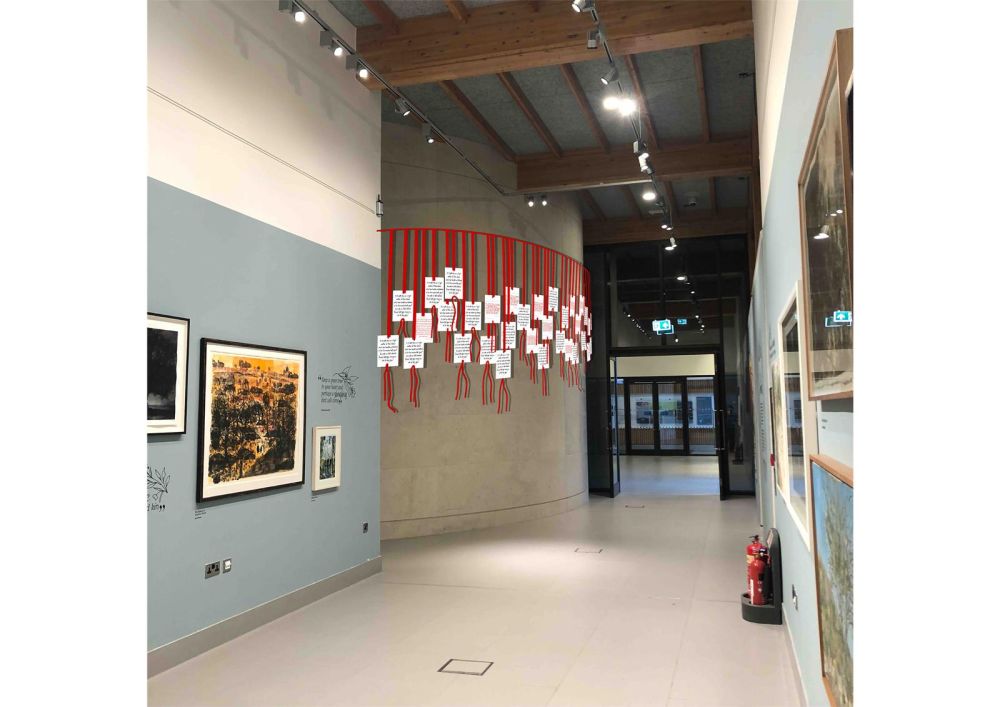BA Ceramic Design students create a public artwork marking 75 years since the end of the Second World War.
“The National Memorial Arboretum asked us to make a piece to commemorate VE Day. The theme was 'Tea for II' and a lot of our conversations were around stories omitted from collective history. We wanted to challenge the traditions of British War memorials and focus on overlooked stories.”
Emma Lacey, Stage 2 Leader, BA Ceramic Design
In archives, students researched the relationships between personal and collective narratives. In workshops with artists Shiraz Bayjoo and Clare Twomey, they considered who is, and isn't, part of that storytelling. For the final design, they wanted to create a space for those who fought but had not been actively included in the annual VE Day celebrations.
-
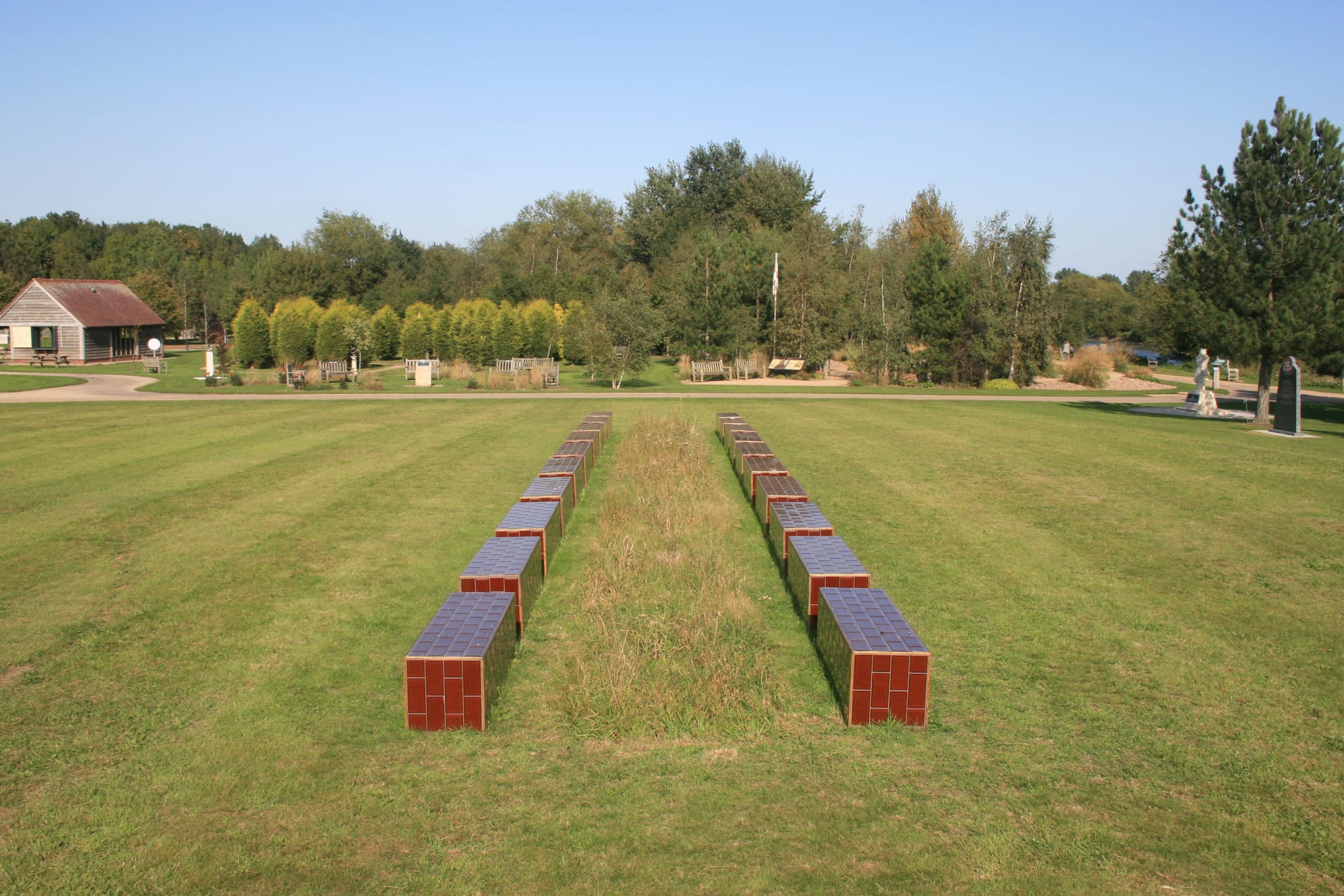
Absence/Presence, National Memorial Arboretum, BA Ceramic Design
-
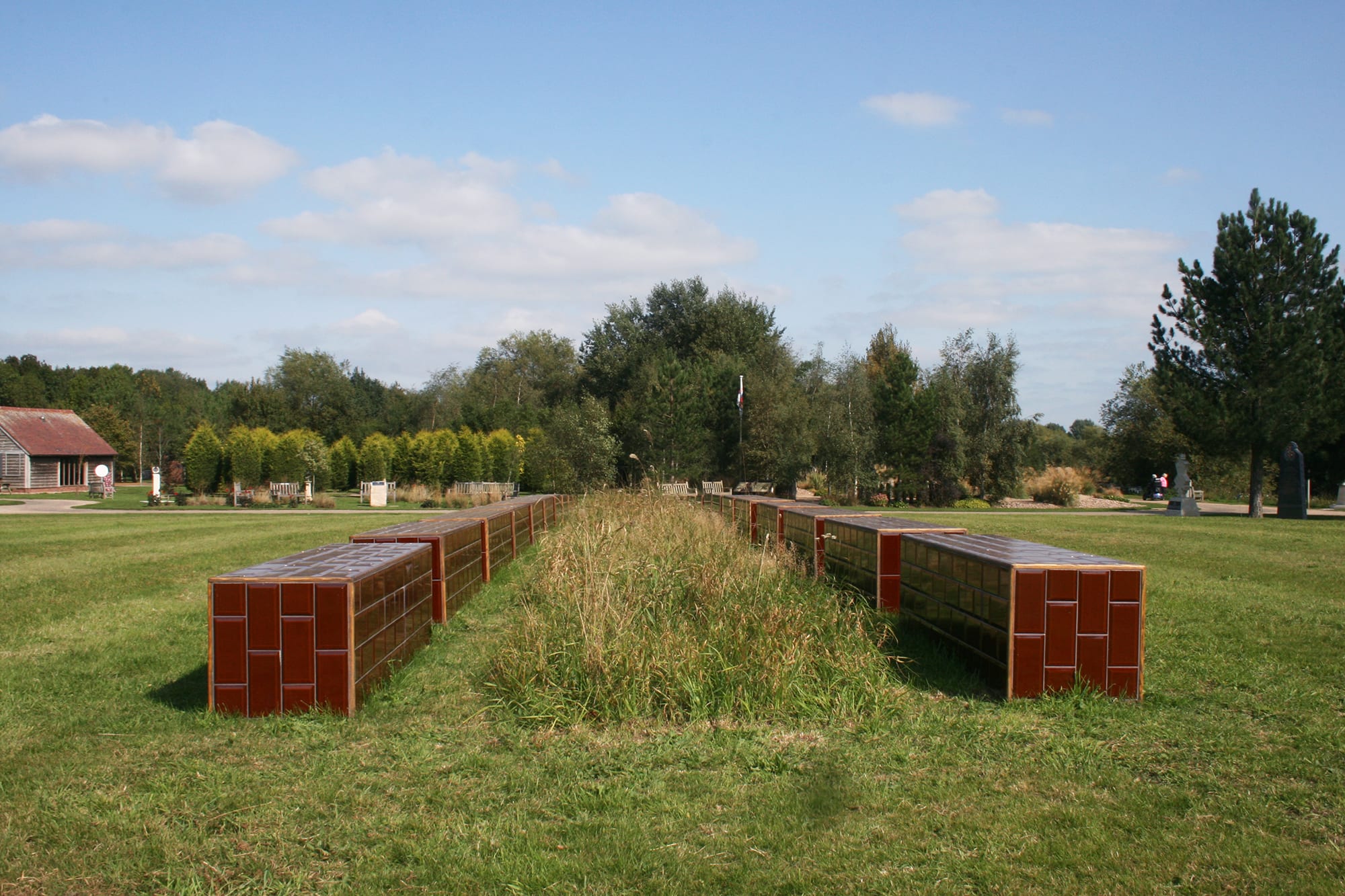
Absence/Presence, National Memorial Arboretum, BA Ceramic Design
-
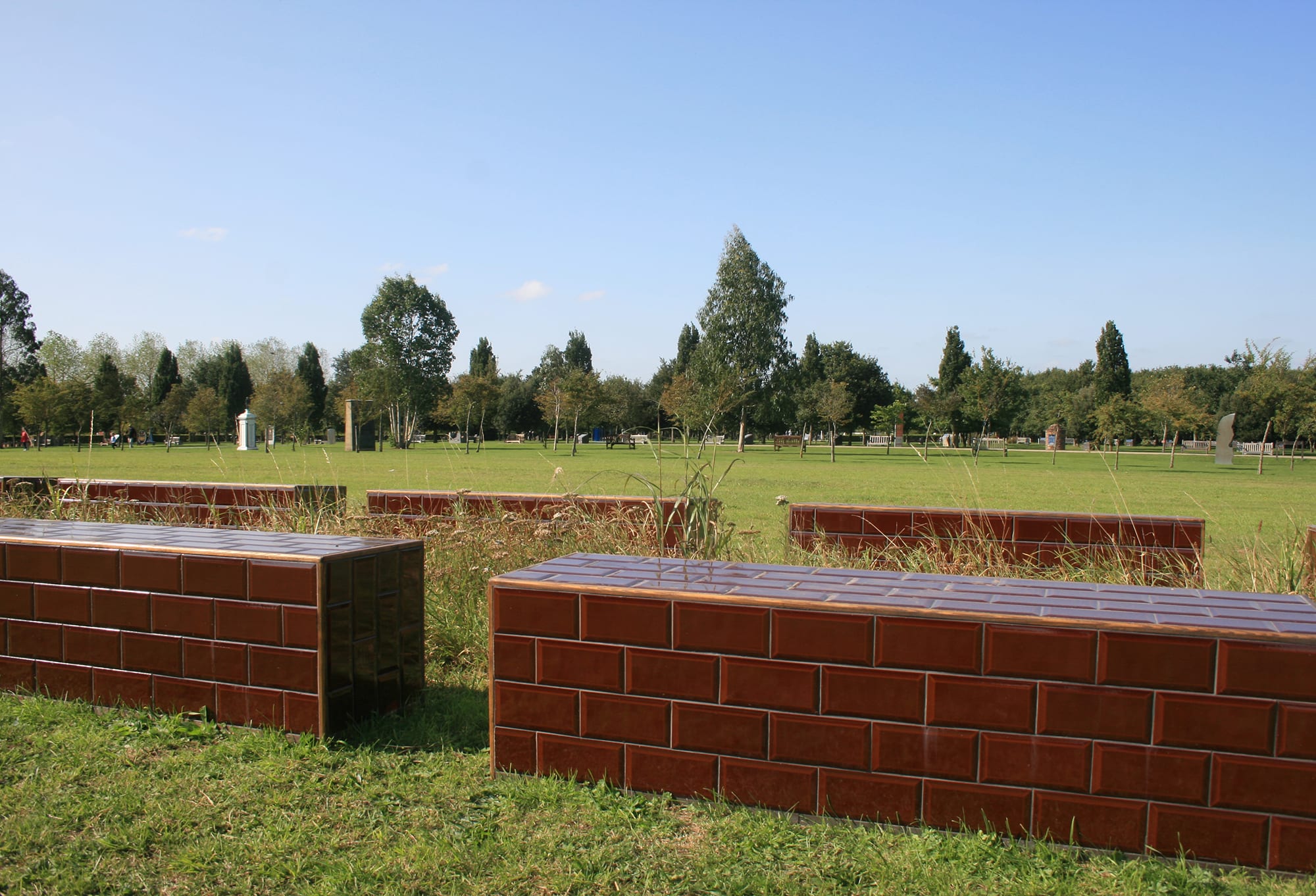
Absence/Presence, National Memorial Arboretum, BA Ceramic Design
Absence/Presence is a series of tiled benches placed on an ancient burial mound at the National Memorial Arboretum (NMA). Reflecting the communal importance of celebrations, the work is both monumental and domestic. It doesn’t name specific people, but instead asks us to reflect on those not here.
Flowers and plants from across the Commonwealth surround the installation. They represent not only the many people but also the resources that came from across the globe to contribute to war effort.
While the entire year group collaborated with staff on one large installation, at the same time they were working in smaller groups to make ceramic responses to the brief for an exhibition at the NMA. Isis Dove-Edwin worked with fellow students and focused on the 14th Army. It was the largest army in the Second World War and comprised units from across the Commonwealth.
“We looked at the contribution of Black and Indian soldiers which we felt wasn’t part of the collective memory of Britain and the War. We wanted to put forward this lesser-known narrative… The leaders of the 14th Army were white men but the line behind them wasn’t… It was an army of people of colour so no war correspondent was dispatched to it. It became the forgotten army.”
Isis Dove-Edwin, BA Ceramic Design student
The resulting work is an extruded line in the shape of an anonymous man. Its form reflects the 14th Army’s line, thought to be the longest in the War, but also the colour bar that continues to omit Black and Indian voices from collective histories.
Gallery
The Longest Line, ceramic and film, Isis Dove-Edwin, Layla Simner-Lock, TrixMagosara, Ebony Richardson and Brandon Chukwuoma
Proposal for intervention in the restaurant at National Memorial Arboretum, Sara Kenward, Louise Gooden, Alex Dedes, Ruby Cheng and Erica Tung
Tile installation, YouYou Wang, Remi Russo, Ekaterina Gantzoudi Gionela, and Chloe Mountain
The Wishing Tree, Jo Hall, Georgie Fuller, Jiaxin Duan, Nicha Lapevisuthisaroj andYibei Liu
More:
-
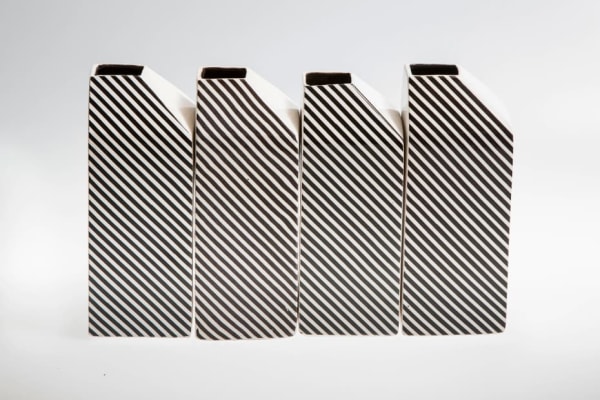
Ann Mercer, A row of black and white striped blocks


